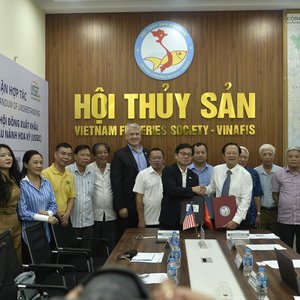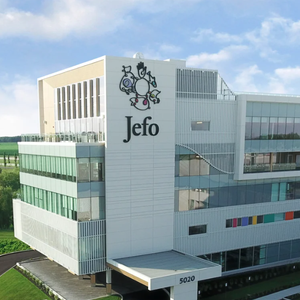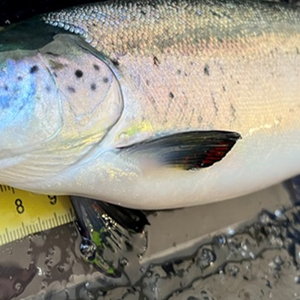Fish Farm Empties Its Ponds to Grow Algae for Biofuels
San Diego-based Kent SeaTech, once the world’s largest producer of hybrid striped bass, recently sold the last of its fish to enter the highly speculative but potentially lucrative race to commercialize algal biofuels.
The company, now called Kent BioEnergy, said its decision to leave the fish-growing business was based purely on economics. It now seeks to expand its pilot algal production facility in Mecca in the Imperial Valley, at the same site where over the course of three decades, it raised about 50 million pounds of its trademark “California farmed striped bass.”
“We are still in the aquaculture business,” says Jim Carlberg, vice president of operations at Kent BioEnergy. “We are just now growing algae instead of fish.”
Carlberg cites a number of operational expenses that eventually made staying afloat farming fish impossible. Feed costs doubled, he says. Airfreight to the East Coast tripled; seafood imports flooded the market; energy and water costs soared. All the while fish prices remained level.
“There was no profit margin,” says Carlberg, who has collaborated on several Sea Grant aquaculture research projects over the years, the most recent of which sought to develop a vaccine for the problematic fish disease, Streptococcus iniae. “It was that simple, and it was nothing unique to us, or to California, or to anywhere in the developed world.”
The last two years of the company’s existence as Kent SeaTech, the farm tried selling tilapia live to local Asian markets. When this failed to turn the bottom line (the live market wasn’t large enough), the company turned to algae.
The idea is not as far flung as it might seem, says Greg Schwartz, a senior scientist at Kent BioEnergy, who was hired eight years ago to oversee the company's algal operations.
Kent SeaTech was growing algae 30 years ago to feed zooplankton, which in turn were fed to juvenile fish. Algae were later grown in the fishponds to neutralize ammonia waste in fish effluent. The algae mop up toxic forms of nitrogen excreted by fish, making it possible to re-circulate water longer.
The company also partnered with agricultural engineer David Brune at Clemson University in South Carolina to patent a process for removing algae from the water column to meet federal water-quality standards on aquaculture effluent.
Both of the projects underway at Kent BioEnergy are spinoffs of technologies developed to manage and conserve water at the old fish farm, Schwartz says. In one, funded by the state of California, algae are being used to soak up nitrogen in agricultural runoff destined ultimately for the Salton Sea. In the other, funded by an industrial client, algae are being used to remove nutrients in the liquid that drains from landfills.
The company now hopes to build out its algal operations into a demonstration-scale biofuels and remediation facility.
“We know how to grow algae and we know how to harvest it,” says James Levin, director of the company’s molecular research. There are a couple of major research areas that have to be tackled to make algal biofuels economically plausible for us, or anyone. One is to develop algal strains with a significantly higher lipid content. The other is to develop low-cost techniques for extracting oil from the cell.
The University of California will soon announce the creation of a regional center for algal biotechnology with both academic and commercial partners, including Kent BioEnergy.
“A lot of people are coming out of the woodwork on this,” says Mike Massingill, vice president of systems engineering at the company. “To hear them all, you’d think they have been working on algal biofuels for 20 years. What we are betting on is that they have not done anything before on a commercial scale.”










